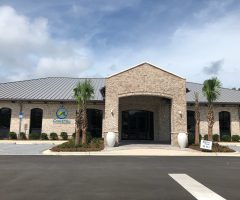Mohs Micrographic Surgery | FAQS

Dr. Adams, a fellowship-trained Mohs surgeon who has the extensive expertise and training to effectively treat many types of skin cancer, took a moment to answer some frequently asked questions about Mohs Microscopic Surgery.
He has participated in over 700 Mohs surgical cases in training and he has performed more than 14,000 Mohs procedures in private practice. Dr. Adams is a Fellow of the American College of Mohs Surgery, a distinction earned by fewer than 8% of all dermatologists in the United States.
Q. What is Mohs Micrographic Surgery?
A. While some skin cancers can be adequately treated through standard excision by a dermatologist, some skin cancers require a more precise surgical technique. Mohs micrographic surgery is an outpatient based surgical method that removes skin cancer while simultaneously preserving all of the normal surrounding skin. In properly trained hands, Mohs surgery has the highest cure rate of any other treatment of skin cancer. Mohs surgery is typically performed in areas of the body where preserving normal skin tissue is critical, such as the face, eyelids, nose, ears, and lips. By preserving all of the normal skin, the Mohs surgical defect remains as small as possible. Smaller defects require fewer stitches and less complicated pairs and ultimately result in quicker healing and optimal cosmetic and functional outcomes. Mohs micrographic surgery is performed in the office under the safety of local anesthesia.
Q. What skin condition does this procedure treat?
A. Mohs micrographic surgery treats a variety of non-melanoma skin cancers, most commonly basal cell carcinoma and squamous cell carcinoma. Mohs micrographic surgery is also used to treat less common cancers such as atypical fibroxanthoma, sebaceous carcinoma, dermatofibroma sarcoma protuberans, micro-cystic adnexal carcinoma, and a few others.
Q. How long does the surgery last?
A. The duration of most micrographic surgery varies; however, patients generally can expect to spend from one to three hours at our office for their procedure. Despite the duration, patients are usually able to eat and drink and relax as normal while at the office having their procedure.
Q. What is the recovery time after surgery?
A. After having Mohs micrographic surgery, patients should allow adequate time to recover and recuperate. In nearly all situations, patients should expect to take it easy for the first 48 hours after their surgery. Every patient will leave the office with pressure dressing in place. They will be asked to keep this pressure dressing clean and dry for the first two days. Some patients may be advised to sleep with an extra pillow under your head at night. After approximately 48 hours, every patient will be allowed to “take the million-dollar shower”, get the dressing wet, and change the dressing. For surgical sites that are sutured, the recovery time is generally 5 to 7 days.
Some surgical sites achieve optimal cosmetic and functional results by healing without stitches. This process is termed “healing by secondary intention”. When surgical wounds heal by secondary intention, they may heal within one week or in certain circumstances they may require a few months.
Q. Can Mohs surgery be performed to treat all skin cancers?
A. Mohs surgery is not indicated for the treatment of all skin cancers. Mohs micrographic surgery is indicated for the treatment of skin cancers involving the face, eyelids, ears, nose, and lips. Mohs micrographic surgery can also be used to treat skin cancers involving the genitalia and other high-risk sites such as the lower legs and fingers and hands. Mohs micrographic surgery is also appropriate to treat aggressive skin cancers and skin cancers that have recurred after prior unsuccessful surgical treatment.
Q. Why should a dermatologist that performs Mohs surgery be fellowship trained?
A. Only 8% of dermatologists in the United States have completed a fellowship in Mohs micrographic surgery. Dermatologists who successfully complete a fellowship in Mohs micrographic surgery have received extensive training in the various methods of this procedure ranging from the basic to the most complex tumors and situations as well as advanced training in surgical reconstruction methods. The advanced certification of Fellowship trained Mohs surgeons is recognized by the presence of “FACMS” (Fellow of the American College of Mohs Surgeons) in their professional title.

